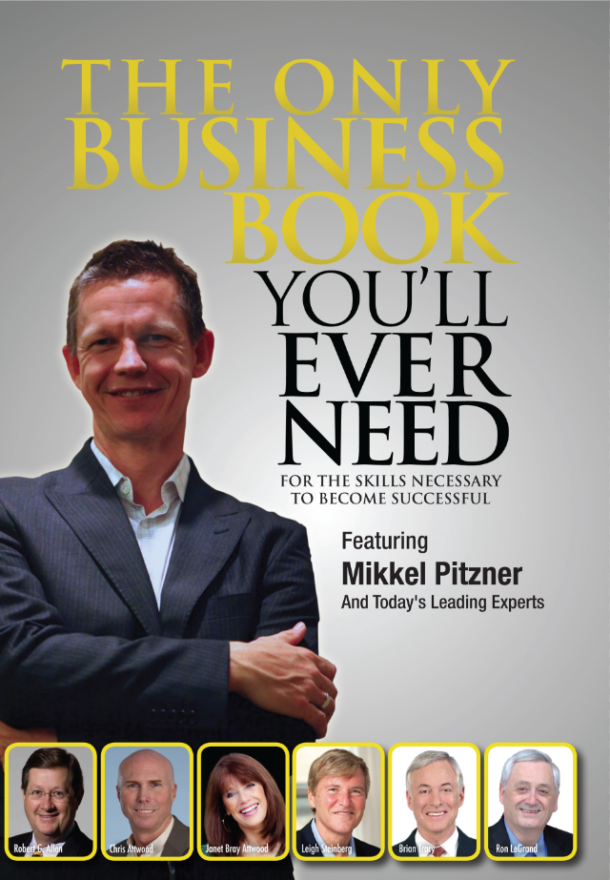
A critical follow-up on what your business is really worth, and what you need to add to that multiple.
In our last article, we broke down the truth about business valuations, the mysterious multiplier factor and what it’s actually applied to.
Quick recap:
- Most businesses are valued using a multiple of EBITDA, not net profit
- That multiple reflects transferability, growth potential, and risk
- It can range from 2x to 8x+ depending on how well you’ve built the business
But here’s what we didn’t cover, and it’s a crucial piece of understanding your total business value:
The multiple gives you the value of your business operations. But that’s not everything you’re selling.
You’ve also got trucks, equipment, inventory, maybe real estate, cash in the bank, and other assets that add real value to the total deal.
These don’t get multiplied of course. But they get added.
And understanding this distinction can mean the difference between a disappointing exit and a wealth-building one.
The Complete Business Value Picture
Most owners think about their business value in one big lump: “What’s my business worth?”
But buyers, and smart sellers, think about it in two distinct parts:
Part 1: The Business Operations Value (The Multiple)
This is your EBITDA × Multiple calculation.
Example: $1M EBITDA × 5x multiple = $5M
This represents the value of your profit-generating system and your ability to consistently turn operations into cash flow.
Part 2: The Asset Value (Added Separately)
These are the tangible assets that support your business but are valued independently:
- Real estate and property
- Vehicles and transportation equipment
- Manufacturing equipment and machinery
- Inventory and raw materials
- Cash and bank accounts
- Accounts receivable
- Other business assets
These get added to your business value, but are naturally not multiplied.
Why This Distinction Matters
Let’s say you own a manufacturing business:
- Business operations: $1M EBITDA × 4x = $4M
- Commercial building: $1.2M (appraised value)
- Manufacturing equipment: $800K (fair market value)
- Vehicle fleet: $300K (current market value)
- Current inventory: $400K (cost basis)
- Cash and receivables: $200K
Total business value: $4M + $2.9M = $6.9M
That $2.9M in assets just increased your total exit value by 73%.
And here’s the beautiful part: You control both sides of this equation.
You can work to increase your multiple (by improving operations, reducing owner dependency, building systems), AND you can optimize your asset base to maximize the add-on value.
The Asset Categories That Add Value
Category 1: Real Estate
Commercial property you own gets added at fair market value.
Why it matters: Real estate often appreciates independently of business performance. A property you bought for $500K ten years ago might be worth $1.2M today.
Buyer options:
- Purchase the property as part of the deal
- Lease it back from you (creating ongoing income)
- Require you to sell separately
Category 2: Equipment and Machinery
Manufacturing equipment, vehicles, tools, technology – anything needed to run the business.
Valuation method: Fair market value (what a willing buyer would pay today).
In truth, what you can often expect here is valuation corresponding to what similar equipment could be bought for at an equipment auction. This often means a rather low-dollar valuation.
Your only alternative in this respect would be to see if you could find an end-user who could use some of this equipment and seek a higher price. But first of all, this may not always be very feasible or would take you too low and too much effort, and as often is the case, the buyer of the business would need this equipment in ongoing production and operations after take over, and would consider all of this equipment to be part of the deal.
Key insight: Well-maintained, current equipment adds more value than old, depreciated assets.
Category 3: Inventory and Materials
Raw materials, work-in-progress, finished goods – the stuff that turns into sales.
Valuation method: Usually cost basis, adjusted for obsolescence
Negotiation point: Fresh, fast-moving inventory commands full value. Old, slow-moving stock gets discounted.
Category 4: Financial Assets
Cash, bank accounts, accounts receivable, short-term investments.
Cash transfers dollar-for-dollar (minus any debt obligations).
Receivables transfer at face value, adjusted for collection risk.
Category 5: Intangible Assets
Patents, trademarks, proprietary technology, exclusive contracts.
These can add significant value but require separate valuation methods.
The Hidden Asset Optimization Opportunity
Here’s what most owners miss: You can actively increase your asset value while you’re building your business value.
Equipment Optimization
- Upgrade key equipment before sale to increase value and operational efficiency
- Maintain detailed maintenance records to prove equipment condition
- Dispose of obsolete equipment to clean up the asset base
Inventory Management
- Optimize inventory levels — too little shows lost opportunity, too much shows poor management
- Clear out slow-moving stock before going to market
- Implement inventory management systems that buyers will value
Real Estate Enhancement
- Improve property condition and appearance
- Get professional appraisals to establish current market value
- Consider expansion potential that adds to property value
Cash Management
- Build cash reserves to show financial strength
- Clean up receivables to maximize collection value
- Pay down unnecessary debt to improve net asset position
Common Asset Valuation Mistakes
Mistake #1: Emotional Valuation
Wrong thinking: “I paid $500K for this equipment, so it’s worth $500K.”
Reality: Assets depreciate. Fair market value is what someone would pay today.
Mistake #2: Retail Pricing
Wrong thinking: “My inventory is worth $400K at retail prices.”
Reality: Buyers typically pay cost basis, often with discounts for age and turnover.
Mistake #3: Ignoring Condition
Wrong thinking: “It still works, so it’s still valuable.”
Reality: Condition dramatically affects value. Well-maintained assets command premiums.
Mistake #4: Sentimental Attachment
Wrong thinking: “This building has special meaning – I built my business here.”
Reality: Buyers pay market rates, not emotional premiums.
Real-World Deal Structure
Manufacturing Business Example:
Business Operations Value:
- EBITDA: $1.2M
- Multiple: 4.5x
- Business value: $5.4M
Asset Value:
- Building: $1.8M
- Equipment: $600K
- Vehicles: $200K
- Inventory: $350K
- Cash/Receivables: $150K
- Asset value: $3.1M
Total Deal Value: $8.5M
Structure options:
- All-cash deal: Buyer pays $8.5M for everything
- Business + lease: Buyer pays $6.7M for business + assets, leases building
- Partial asset sale: Buyer takes business + equipment ($6M), seller keeps building
The Professional Valuation Process
Step 1: Business Valuation
Use comparable sales, multiple analysis, and DCF methods to value operations.
Step 2: Asset Appraisals
Real estate: Licensed commercial appraiser
Equipment: Certified machinery appraiser
Vehicles: Automotive appraiser
Inventory: Physical count with aging analysis
Investment: $10K-20K total
Return: Credible valuations that support your asking price
Step 3: Deal Structuring
Determine how to package business and assets for maximum value and buyer appeal.
The Tax Considerations
Different assets = different tax treatment:
- Business goodwill: Capital gains rates (15-20%)
- Equipment: Depreciation recapture + capital gains
- Real estate: Potential 1031 exchange opportunities
- Inventory: Ordinary income rates
Smart structuring can save significant taxes.
Buyer Psychology: Why Assets Matter
Buyers love asset-backed deals because:
Lower risk: Physical assets provide collateral for financing
Immediate value: They know the equipment and property have standalone worth
Operational readiness: They can start operating immediately without additional capital investment
Financing advantages: Banks lend more readily against asset-backed transactions
Your Asset Enhancement Strategy
6-12 Months Before Sale
Asset audit: Catalog all business assets with current conditions and estimated values
Professional appraisals: Get formal valuations for significant assets
Condition improvements: Upgrade, repair, or replace key assets to maximize value
3-6 Months Before Sale
Documentation: Organize all asset records, warranties, maintenance histories
Legal cleanup: Clear any liens, resolve ownership issues
Presentation: Make sure assets look their best for buyer inspections
At Sale Time
Negotiation strategy: Present business value and asset value as complementary but separate
Structure flexibility: Be prepared to discuss different ways to handle assets
Professional support: Use appraisals and documentation to support your pricing
The Automated Millionaire Approach
In my Selling Your Business program, we take a comprehensive approach to valuation:
✅ Business operations optimization – maximizing your multiple
✅ Asset base enhancement – increasing your add-on value
✅ Professional valuations – getting credible third-party assessments
✅ Deal structuring – finding the optimal way to package everything
✅ Tax optimization – minimizing your total tax burden
✅ Negotiation strategy – presenting your complete value story effectively
Because your total exit value isn’t just about your multiple, but about maximizing every component of value in your business.
The Two-Lever Strategy
Most owners focus only on growing their EBITDA to increase their multiple.
Smart owners optimize both levers:
Lever 1: Increase business value (higher EBITDA and higher multiple)
Lever 2: Increase asset value (better equipment, optimized inventory, improved real estate), but only if this can be done sensibly (and that’s often a challenge)
Example impact:
- Year 1: $800K EBITDA × 3.5x + $1.5M assets = $4.3M total value
- Year 3: $1.1M EBITDA × 4.8x + $2.2M assets = $7.5M total value
- Value increase: 74% over two years
The asset optimization alone contributed $700K to the increase.
Your Complete Value Picture
Don’t think about your business value as just a multiple of earnings.
Think about it as:
Your profit-generating system (valued using multiples) PLUS Your asset base (valued using fair market assessments) EQUALS Your total exit opportunity
Both components matter. Both can be optimized. Both contribute to your wealth-building exit.
Your Next Move
Take inventory of your complete business value:
- Calculate your business operations value using realistic multiples
- Assess your asset base — what’s it really worth today?
- Identify optimization opportunities for both components
- Develop a plan to maximize your total exit value
Because when you’re ready to sell, buyers will be evaluating both your business and your assets.
Make sure both tell a compelling value story.
Written for business owners who want to maximize every dollar of their exit value.
Ready to understand and optimize your complete business value? The planning starts now, not when you’re ready to sell.
My Selling Your Business (small) book is available here
Your FREE Selling My Business Checklist is available here
Yesterday, I also promised a Business Valuation Multiplier tool (see what happens to the price you can get for your businessif you make some improvements first), get the tool here


